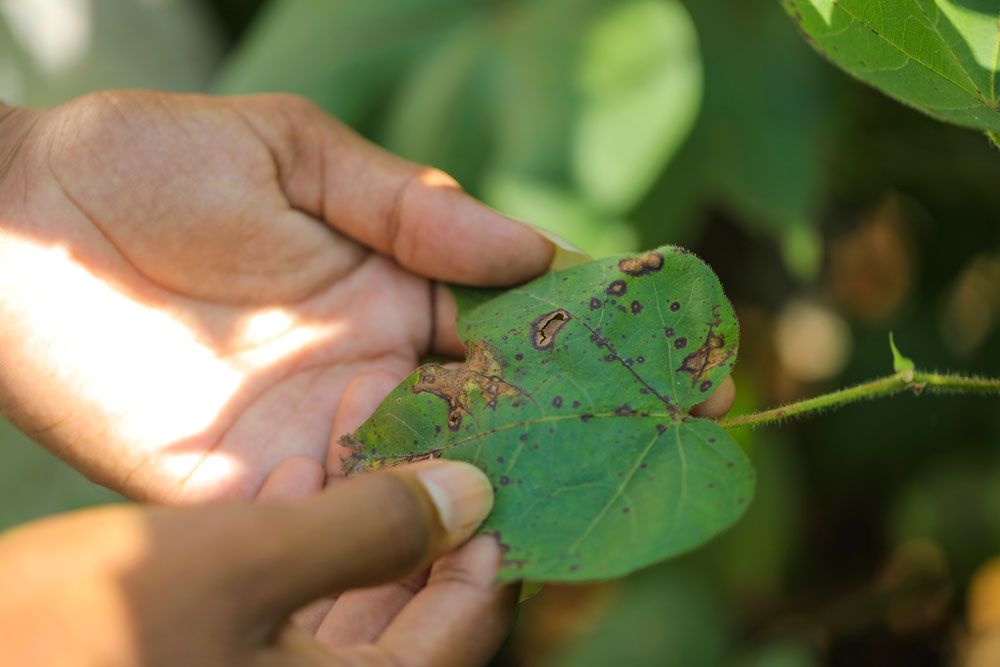
Spots On Leaves
Spots on leaves
Many leaf spot diseases affect a wide variety of native and ornamental plants, trees, and shrubs. Many leaf spot diseases have comparative biology and hence treatment possibilities.
What is a leaf sport?
Leaf Spot is a popular term used to describe a variety of plant diseases. Leaf spot is the term used to describe dead or necrotic areas on leaves caused by fungal or bacterial diseases. When the spots spread into bigger regions of dead tissue, the illness is called blotch; if the huge areas are swiftly destroyed, the sickness is referred to as blight. There are several illnesses known as ‘leaf spot.’ The majority of leaf spot is caused by fungi, although bacteria also produce some. Larger groups of fungal leaf spots are frequently referred to as anthracnose or canker.
Symptoms of leaf sports:
Spots on leaves are the most common sign of a leaf spot disease. The size and color of the spots will vary based on the plant, the organism involved, and the growth stage. Spots are usually brownish, although they can also be tan or black. Concentric rings or dark edges are common. Fungal bodies might show in the spots as black dots in rings or a central cluster. Blotches might occur as a result of the spots combining or enlarging over time. Anthracnose is typically defined as angular spots or blotches. Leaves may turn yellow and fall prematurely.
Life Cycle:
The organisms that produce leaf spots live in diseased leaves and twigs that have fallen. Some may persist in the tree’s dead twigs. Most of the harm happens in the spring. Spores may be splashed or windblown onto freshly developing delicate leaves during rainy conditions, where they germinate and infect the leaf. Overhead watering can also produce long periods of wetness, which are perfect for the propagation of leaf spot diseases.
Control:
- When choosing fruit trees, select resistant varieties if possible.
- Keep the soil under the tree clean by raking up fallen fruit.
- After thoroughly raking and cleaning the soil, apply a thick layer of mulch to cover it. Mulch will keep weeds at bay while also preventing disease pathogens from splashing back up onto the leaves.
- To enhance air circulation, prune or stake plants. After each cut, sanitize your pruning tools (one part bleach to four parts water).
- Leaf spot in vegetables is most commonly spread by contaminated seed or transplants. Make certain that your seeds and transplants are clear of leaf spots.
- They are spraying with a baking soda solution or neem oil (a tablespoon of baking soda, 2 1/2 teaspoons of vegetable oil, and a teaspoon of liquid soap, not detergents, to one gallon of water) (do not use when pollinating insects as well as bees or other beneficial insects are present). Some plant leaves may be burned by baking soda. Spray simply a few times and wait for a reaction before repeating every two weeks.
- To prevent disease spread, apply sulfur sprays, Safer® Brand 32 Oz. 3-In-1 Garden Spray, or copper-based fungicides weekly at the first indication of illness. These organic fungicides do not eliminate leaf spots, but they do prevent spores from developing.
- With SERENADE Garden, you can safely cure most fungal and bacterial infections. This broad-spectrum bio-fungicide employs an organically registered patented strain of Bacillus subtilis. The best part is that SERENADE is entirely non-toxic to honey bees and other helpful insects.
- Bonide® Garden Dust, which contains copper and pyrethrins, is a safe, one-step solution for many insect and fungus issues. Cover both the tops and lower leaves with a thin uniform coating or dust for the greatest effects. Ten ounces will cover 625 sq ft depending on foliage density. As required, reapply applications every 7-10 days.
